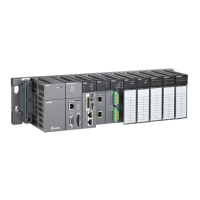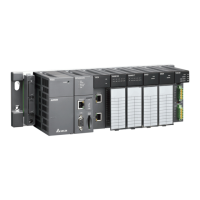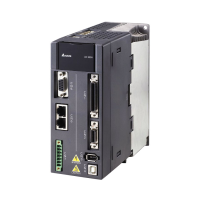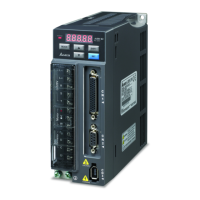AH Motion Controller – Operation Manual
7-12
7.6 Buffer Mode
During the execution of a motion control instruction, it is possible to execute other motion instructions for the same axis.
There are 6 buffer modes for users to choose from, switching from one motion instruction being executed to another
motion instruction. The buffer mode can be selected through the BufferMode parameter of the buffered motion
instruction.Users can select the buffer mode according to the buffer mode of the later instruction.
Terms used in the buffer mode are described below:
Current motion instruction: the current motion instrtuction for controlling the axis
Buffered instruciton: the instruction is waiting to be executed.
Transit velocity: the speed at which the axis moves at the moment when the currently being executed
instruction is switched to the buffered instruction.
Target velocity: the Velocity parameter of an instruction Target position: the Position or Distance
parameter of the position-related instructions.
0: mcAborting
The instruction being executed currently is aborted immediately.
1: mcBuffered
The buffered instruction just starts to control the axis after the current instruction
execution is completed.
2: mcBlendingLow
(Blend with low)
The buffered instruction just starts to control the axis after the target position of the
current instruction is reached. The transit velocity is the lower of the target velocities
of the current instruction and buffered instruction.
3: mcBlendingPrevious
(Blend with previous)
The buffered instruction just starts to control the axis after the target position of the
current instruction is reached. The transit velocity is the target velocity of the current
4: mcBlendingNext
(Blend with next)
The buffered instruction just starts to control the axis after the target position of the
current instruction is reached. The transit velocity is the target velocity of the buffered
5: mcBlendingHigh
(Blend with high)
The buffered instruction just starts to control the axis after the target position of the
current instruction is reached. The transit velocity is the higher of the target velocities
of the current instruction and buffered instruction.

